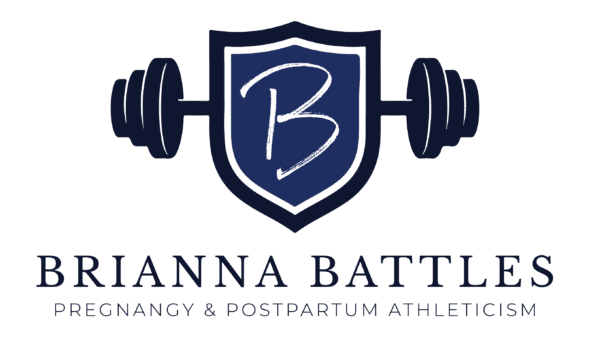I’ve written about Diastasis Recti for a few years now! Thankfully there’s more awareness, but with this, there’s even more misinformation, which is so easy to fall victim to! For a while, I documented my own struggles and frustrations with the lack of information, conflicting information and unqualified professionals. I saw my share of professionals and tried many suggestions made and shared them, but none truly resolved this issue for me. Even being part of the fitness, birth and women’s health world, no one was really giving definitive answers. It all felt ridiculous! How can this be so common, yet, with so few resources? It’s not as simple as do these 5 exercises! If it was, no one would have this problem.
“Be who you needed when you were younger.”
In this case, younger meaning, pregnant and a new mom. haha! I created a career based on everything I desperately wish someone would have informed and educated me about! I spent a ton of money and even more time getting answers, or frankly, ruling out poor information. I do not have all the answers, not even close, but at least now, I have a really solid foundation, greater education, amazing referral network to the leaders in this field and I even get to work with them! I’ve been able to coach many women on healing a diastasis, and balancing out the pressure system that is their core function.
The effectiveness of a improved system is what heals Diastasis Recti, incontinence and any other pelvic floor problem. And yes, these symptoms are all typically related. Before continuing to read through this post, read this summary from a seminar I gave. It’s an all encompassing explanation to the experiences of many women with Diastasis or dysfunction in general. Once you read it, everything here (or from that article) will make more sense!
Diastasis healing and overall function is achieved through breath that coordinates with your pelvic floor, improved alignment and movement patterns that match the breath. Therefore, healing a diastasis cannot be done by saying “do hip thrusts! planks! squats! bird dog!” These exercises, or any targeted transverse abdominal exercise, although typically pretty safe and healthy, aren’t always healthy for a diastasis when it’s not coordinated with breath and pelvic floor relaxation/contraction. If you’re being told to simply do kegals, find a new practitioner- this recommendation is years behind in research.

So what is Diastasis Recti?
It is the stretching of the linea alba, the connective tissue that holds the right and left sides of your abdominal wall together. Think, the line of the 6 pack abs you may or may not have. DR is very common in pregnancy and postpartum and now we know that the most important factor to a diastasis is the “life”- the density- of the fascia that connects the abs together. Sometimes it heals on its own, but if alignment, breathing, movement patterns and exercise have not been ideal through pregnancy, before, and in postpartum chapters, it’s likely a diastasis and the fascia can be made worse before it’s improved by the mama who simply wants a flat stomach again. With the benefits of exercise during pregnancy being undeniable, it’s important to be aware of what can worsen an already expanding abdomen. Pregnancy is temporary, postpartum is forever. Think of the end game- beyond the pregnancy/delivery. Choose exercises that support YOUR postpartum recovery and life years later. Trust me.
How do I know if I have it?
Well, my awesome friend Jen, at Mama Lion Strong and Healthy Habits Happy Moms wrote a great, organized and articulate guideline for how to PROPERLY check for a diastasis. I can’t tell you how many people come to me after being told ridiculous things, and then learning that they weren’t even checked correctly…myself included!! No wonder this misinformation spreads like crazy! The basics aren’t even understood!
Implications:
Diastasis often coincides with hernias, incontinence, prolapse and other pelvic or back pain. Aesthetically, a woman may also appear pregnant, often referred to as having a “mummy tummy” or pooch. During pregnancy a cone like shape may appear on the abdomen when doing any kind of crunch…even just sitting up off the couch. Sometimes an odd shaped belly button postpartum can be a sign that the tissue underneath is not dense. And most importantly, a woman should be able to exercise, lift her kids and perform her daily tasks without being concerned about her core’s strength and stability.
Bracing, taping, wrapping etc will not resolve it. These methods should only be attempted with help of a skilled practitioner and with their recommendation and education, not yours as an attempt as a quick fix. If it is implemented into your treatment it must be in cooperation with your therapy. It’s about the fascia- not squeezing the ab muscles back into place. The goal is long lasting results and function, not temporarily manipulating the muscle. It’s also important to know that bracing can cause more problems than it solves in terms of assisting in closing a diastasis, especially when used without the assistance of a professional. Again, the core is a pressure system, therefore, adding extra pressure does not typically help it function as a cohesive unit. The women I work with have not had to use bracing to close their Diastasis.
Surgery is a last resort, yet seems to be recommended by many misinformed OB’s as an option. It’s simply not their job to have in-depth knowledge about Diastasis. Surgery for DR is done via a tummy tuck, a highly invasive procedure, and not covered by insurance. Diastasis can be healed through corrective exercise and through working with a skilled practitioner. If it does not improve, then your Doctor and Physical Therapist can help guide you through the next step. Surgery is not a quick fix…it’s a long road to recovery and doesn’t solve the root of the issue, being, an improperly functioning system.
Move Your Body:
The goal is to meet a woman where she is…whether she’s 2 weeks or 2 years postpartum trying to heal a diastasis.
Before simply performing an exercise, check your alignment.
Basic cues: Ribs over hips, weight distributed mid-foot, glutes slightly elevated. A tucked pelvic (left) is incredibly common in the postpartum chapter and does not allow for proper firing of system (core) or glutes,
 Piston Breathing: on an inahle, your pelvic floor should relax. When you exhale, the pelvic floor should lift. The lift is not forceful, it’s a controlled kegal- that again, works WITH the breath…not isolated.
Piston Breathing: on an inahle, your pelvic floor should relax. When you exhale, the pelvic floor should lift. The lift is not forceful, it’s a controlled kegal- that again, works WITH the breath…not isolated.
During exercise, it’s really important to remember, as termed by Julie Wiebe, PT, “blow before you go.” “Or exhale upon exertion.” Breathing (exhaling) through your daily movement- lifting your child, standing up, sitting down, closing the car door, or deadlifting hundreds of pounds…an exhale/pelvic floor lift should be utilized.
After practicing this, it will become natural, as this is a neuromuscular function.
Glute exercises like squats, hip thrusts and single leg squats are great! Inhale down (PF relaxes), exhale up (PF lifts).
With this breath, you should actually feel your deep abdominal muscles fire, and may feel either sides of your abdomen draw inward toward your belly button.
Exercises/Movements to avoid initially when learning this system is:
-any weight that forces you to hold your breath
-crunching
-downward facing movement (planks, push ups, etc)
-anything that makes your rib cage flare, therefore spreading your abs.
-back bending, hyper extending/overstretching the abdomen in any way.
Dial in the system first and eventually these movements can be added into your routine!
Word to the wise:
Get help. See a pelvic floor physiotherapist, or practitioner who really works with women on this. Now that you know the basics, you’ll be able to tell if your practitioner is on point or not. There are a lot of recommendations out there, but the leaders in this industry are in agreement about the fundamentals (breath and pelvic floor coordination and that the gap matters, but the fascia matters more). Be proactive about your health, function and lifestyle. It’s easy to overlook and put off now, surviving early motherhood is rough! However, YOU still matter. A financial and time commitment now to seek guidance and treatment is better than injuries and dysfunction for years on end. I’ve been there, done that and now it’s my freakin’ mission to reach as many women as possible to help guide them down the healthiest path possible to healing, recovering well and finding strength on top of function.
 My next BirthFit Postpartum Series begins in February. Email me (briannabattles@gmail.com) to secure your spot!
My next BirthFit Postpartum Series begins in February. Email me (briannabattles@gmail.com) to secure your spot!
Want more? I offer in home or online consults, personal training and remote coaching.
Brianna Battles, MS, CSCS
Everyday Battles: Strength, Conditioning and Wellness
